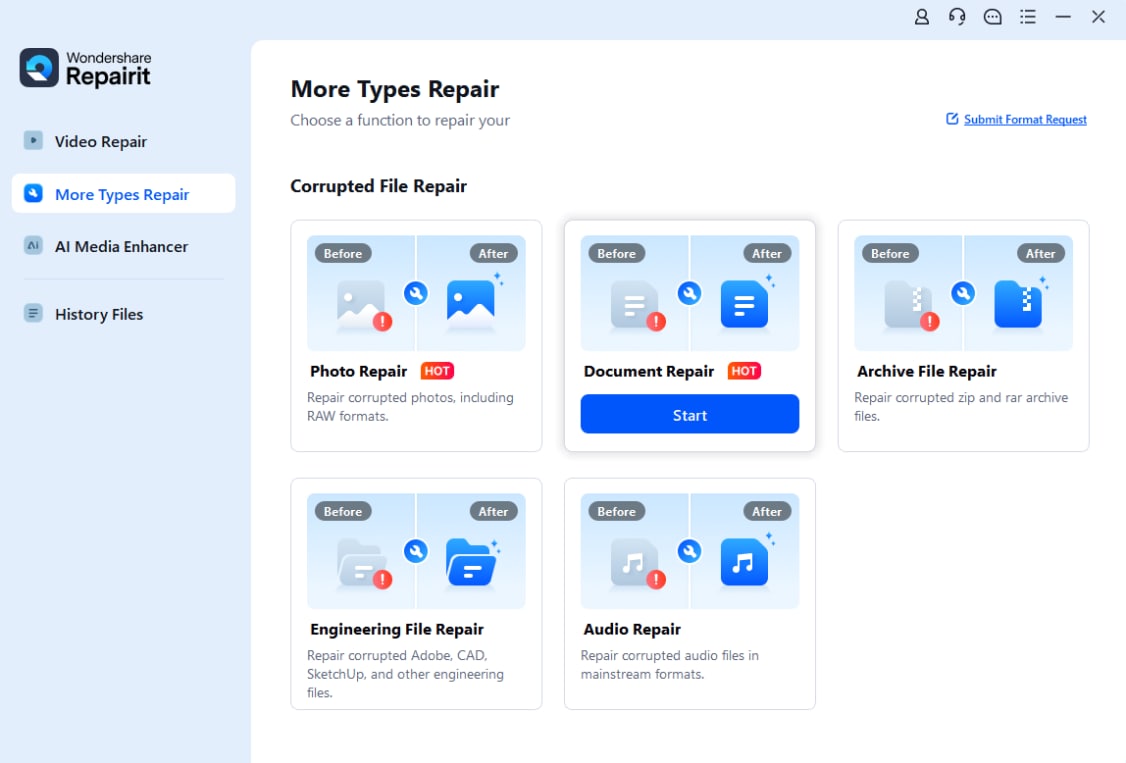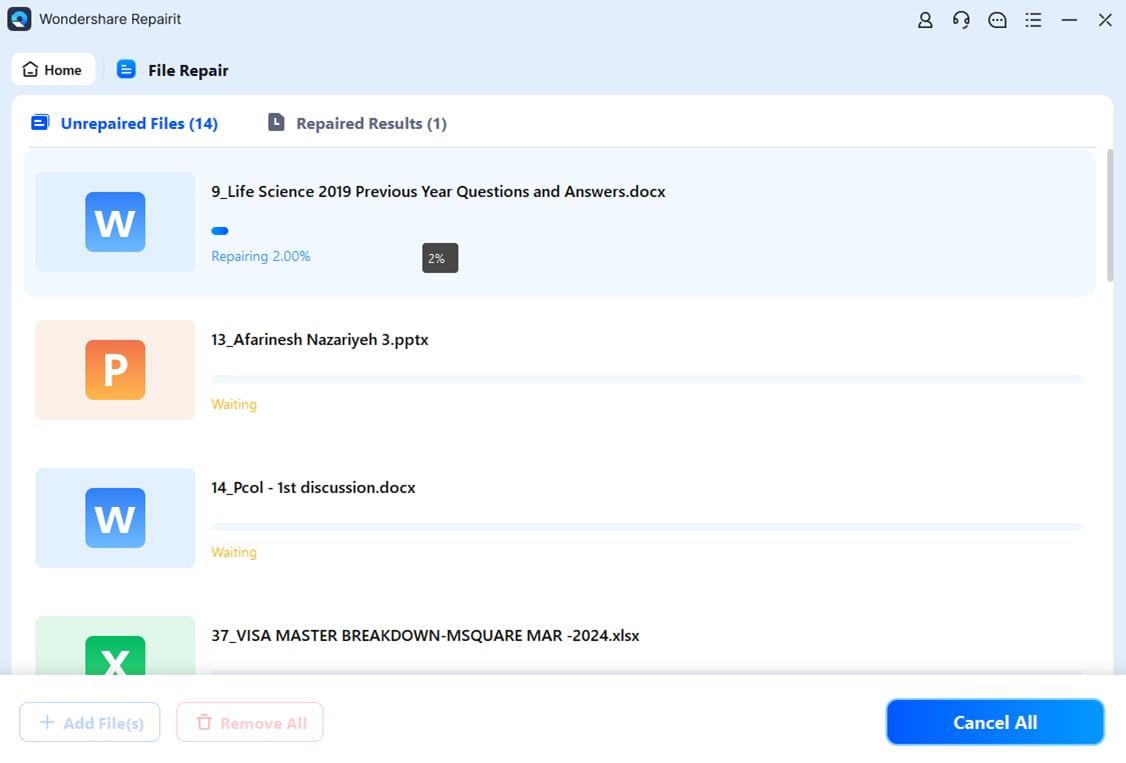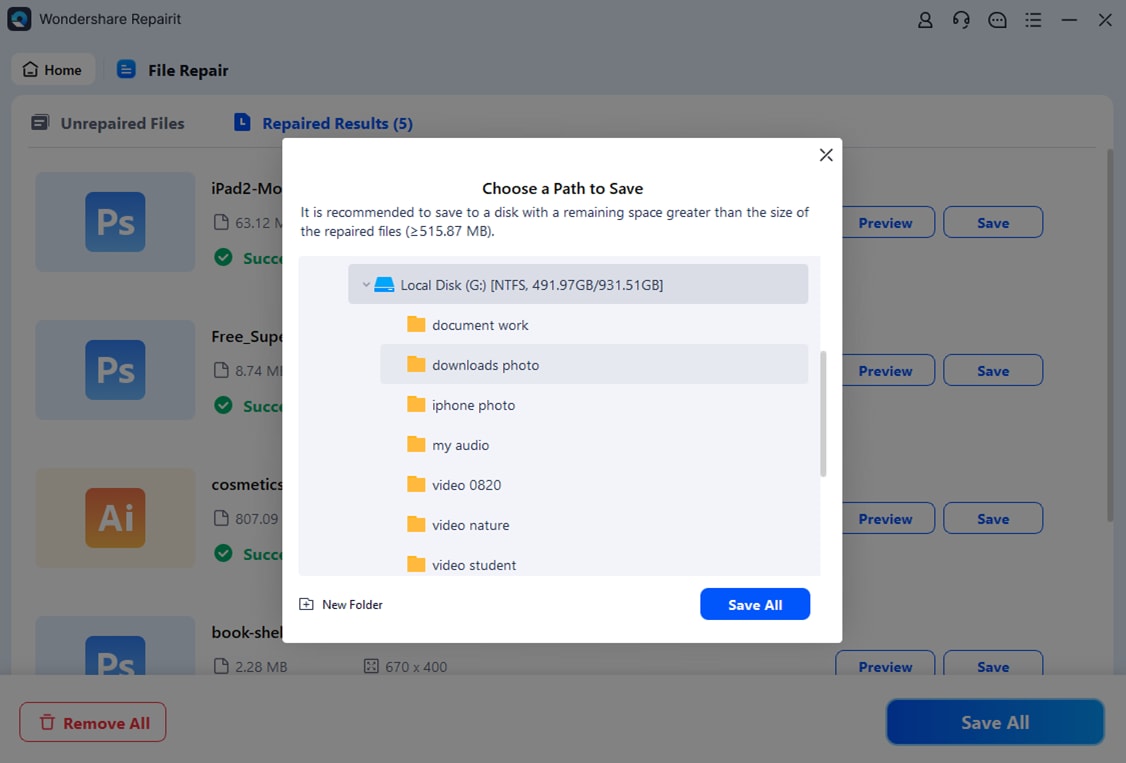Microsoft Word is one of the most widely used word-processing applications in the world. It is a powerful tool that allows users to create and edit a wide range of documents, from simple letters and reports to complex technical manuals and books. However, like any other software, Word can sometimes encounter errors that can be frustrating and disruptive to your workflow.
This "Microsoft Word File Could Not Be Found" error can be particularly frustrating because it can prevent you from accessing important documents, potentially leading to lost work and wasted time.
In this article, we will explore the reasons why the "Microsoft Word File Could Not Be Found" error occurs and provide you with several effective step-by-step methods to fix this issue. We will also offer some tips to help you avoid this error in the future.
Part 1: Why Microsoft Word File Could Not be Found?
There are many reasons why you might see the "Microsoft Word This File Could Not Be Found" error. Here are some common ones:
- Long file or folder names: Microsoft Word has a limit on the length of file and folder names that it can handle. If a file or folder name exceeds this limit, Word may be unable to locate or open the file, resulting in the "File Could Not Be Found" error.
- Special characters in file or folder names: Word may also have trouble locating or opening files or folders that contain certain special characters, such as spaces or symbols.
- File path issues: If a Word file is moved or stored in a location with a long or complex file path, Word may have difficulty locating or opening the file.
- Corrupted or damaged files: In some cases, the "File Could Not Be Found" error may occur if the Word file itself is corrupted or damaged.
- Temporary file conflicts: Word creates temporary files during its operation, and conflicts with these temporary files can sometimes cause errors like the "File Could Not Be Found" error.
Part 2: 4 Methods to Fix the File Could Not Be Found Word Error
Now that we understand the potential causes of the "Microsoft Word File Could Not Be Found" error, let's explore some effective methods to fix this issue.
|
Method |
When to Use? |
Quick Steps |
|
Word-related registry issues or software conflicts |
Run |
|
|
File name is too long or contains special characters |
Shorten the file name while keeping the .docx or .doc extension. |
|
|
Word shortcut is broken, or Word isn't launching correctly |
Navigate to WINWORD.EXE, run it as administrator, and open the file manually. |
|
|
File is stored in a long or complex directory path |
Move the file to a simpler folder (e.g., Desktop) and try opening it again. |
Method 1: Re-register Word
If the "File Could Not Be Found" error persists, you can try re-registering the Microsoft Word application on your system. This process essentially refreshes the Windows registry entries associated with Word, which can sometimes resolve file-related issues.
Here's how to re-register Microsoft Word:
Step 1: Close Microsoft Word if it's currently running.

Step 2: Launch the Command Prompt in admin mode. In the Command Prompt window, navigate to the Microsoft Office installation directory by typing the following command and pressing Enter:
cd C:\Program Files\Microsoft Office\root\Office16
Replace "Office16" with the appropriate version number if you have a different version of Office installed.
Step 3: Once you're in the correct directory, type the following command and press Enter to re-register Microsoft Word:
regsvr32 /i winword.exe

Step 4: Wait for the process to complete, and you should see a message indicating that the registration was successful.
Step 5: Close the Command Prompt window and try opening the Word file again.
Re-registering Microsoft Word can help resolve various issues related to file associations, registry entries, and other system-level conflicts that may cause the "File Could Not Be Found" error.
Method 2: Rename the MS Word file so that it has a shorter name.
If the "File Could Not Be Found" error is caused by a long Image name, you can try renaming the Word file to a shorter name. Here's how:
Step 1: Locate the Word file that is causing the error. Right-click on the file and select "Rename."
Step 2: Rename the file to a shorter name, making sure to keep the ".docx" or ".doc" file extension.

Step 3: Try opening the file in Word again.
If the file opens successfully after renaming it, you've likely resolved the issue.
Method 3: Open with WinWord.exe
In some cases, the "File Could Not Be Found" error may occur due to an issue with the Word shortcut or the way Word is launched. To bypass this potential issue, you can try opening the Word file directly using the WinWord.exe executable file.
Here's how to open a Word file with WinWord.exe:
Step 1: Locate the Microsoft Office installation directory on your computer. By default, it is typically located in "C:\Program Files\Microsoft Office" or "C:\Program Files (x86)\Microsoft Office".
Navigate to the folder that corresponds to your version of Microsoft Office (e.g., Office16, Office15, etc.). Inside that folder, find the "WINWORD.EXE" file.
Step 2: Right-click on the "WINWORD.EXE" file and select "Run as administrator" (Windows 10/11) or "Run with elevated privileges" (Windows 7/8).

Step 3: In the Microsoft Word window that opens, go to the "File" menu and select "Open". Navigate to the location of the Word file that you were unable to open previously and select it.
Step 4: Click "Open" to attempt to open the file using the WinWord.exe executable.
By opening the Word file directly with WinWord.exe and running it with administrative privileges, you may be able to bypass any issues with the Word shortcut or other system conflicts that could be causing the "File Could Not Be Found" error.
Method 4: Transfer the Word file to a folder that has a shorter path name
If the "File Could Not Be Found" error is caused by a long or complex file path, you can try transferring the Word file to a folder with a shorter path name. Here's how:
Step 1: Create a new folder on your desktop or in a location with a shorter path name.

Step 2: Copy or move the Word file that is causing the error to this new folder.
Step 3: Try opening the file from the new location in Word.
If the file opens successfully after transferring it to a folder with a shorter path name, you've likely resolved the issue.
Part 3: Fix “the Word File Could Not Be Found” Error Due to the Word Itself is Corrupted
Sometimes, the "Word File Could Not Be Found" error happens because the Word file itself is corrupt or damaged. If this is the case, Word can't properly open or find the file. To fix this, use a file repair tool like Wondershare Repairit to recover data from the corrupted file.
Wondershare Repairit can be used for this purpose. They can help to repair the word error "file cannot be found". However, it is crucial to remember that the tool you use for word file repair should be an authentic one.
Wondershare Repairit is a powerful and user-friendly tool designed to repair corrupted or damaged Word files. If the "File Could Not Be Found" error is caused by a corrupted or damaged Word file, Wondershare Repairit can help you recover your data and fix the issue.

Wondershare Repairit - Word File Repair

-
Repair damaged files with all levels of corruption, including blank files, files not opening, unrecognizable format, unreadable content, files layout changed, etc.
-
Perfectly repair corrupted word .docx files without modifying the original file.
-
Provide an easy fix option for text, images, font, hyperlinks, header, footer, etc.
-
Support Office 365, MS Word 2019, 2016, 2013, 2010, 2007, and earlier versions.
-
Support Windows 11/10/8/7/Vista, Windows Server 2003/2008/2012/2016/2019/2022, and macOS 10.10~macOS 14.
-
Except Word, Repairit also supports all formats of PDF, Excel, PowerPoint, PDF, ZIP, and Adobe files.
Here's how to use it:
Step 1: Launch the program. Go to “More Types Repair”. Select the “File Repair" option.

Step 2: Click the "Add" button to browse and select the corrupted Word file(s) that you want to repair.

Step 3: Once the file(s) are added, click the "Repair" button to start the repair process.

Step 4: After the repair process is complete, you can preview the repaired file(s) and save them to a new location.
Attention:
If you just want to repair Word files on your phone and the damaged file is no more than 300MB, please try Wondershare Repairit - Online File Repair. Repairit Online supports repairing your corrupted files freely within minutes and provides a nice file repair experience for you.
Part 4: Tips to Avoid "Word File Could not be Found" Error
While the methods mentioned above can help you fix the "Microsoft Word File Could Not Be Found" error, it's always better to take preventive measures to avoid encountering this issue in the first place. Here are some suggestions to help you prevent encountering this error:
- Use shorter file and folder names: When saving Word files or creating new folders, try to keep the names as short as possible, avoiding special characters or spaces.
- Avoid long file paths: Try to save your Word files in locations with shorter file paths, such as your desktop or a top-level folder on your hard drive.
- Keep your files organized: Maintaining a well-organized file structure can help prevent file path issues and make it easier to locate and open your Word files.
- Use anti-virus and anti-malware software: Viruses and malware can sometimes cause file corruption or damage, leading to errors like the "File Could Not Be Found" error. Using reliable anti-virus and anti-malware software can help protect your files and prevent such issues.
Conclusion
Encountering the "Microsoft Word This File Could Not Be Found" error can be frustrating and disruptive, but it is often fixable. By understanding the potential causes of this error and following the methods outlined in this article, you can resolve the issue and regain access to your important Word files.
Remember, prevention is always better than cure. By following the tips provided in this article, you can minimize the risk of encountering the "File Could Not Be Found" error and ensure a smoother and more efficient workflow when using Microsoft Word. If you're dealing with corrupted files that can't be fixed through traditional methods, Repairit is a powerful tool designed to recover your data and fix file issues with ease.
People Also Ask
-
What should I do if none of the methods work for fixing the "File Could Not Be Found" error in Word?
If none of the methods mentioned in this article work, you may need to seek further assistance from Microsoft or consult with a professional IT support service. In some cases, the issue may be related to deeper system or software conflicts that require more advanced troubleshooting. -
Can the "File Could Not Be Found" error occur with other Microsoft Office applications, or is it specific to Word?
The "File Could Not Be Found" error can potentially occur with other Microsoft Office applications, such as Excel and PowerPoint, if they encounter similar issues with file paths, image names, or file corruption. However, the specific error message and troubleshooting steps may vary depending on the application. -
Is there a way to prevent Word from creating temporary files that could lead to conflicts and errors?
Unfortunately, there is no straightforward way to prevent Word from creating temporary files, as these files are essential for the application's operation and functionality. However, you can try regularly clearing your temporary files and caches, as well as ensuring that you have sufficient disk space and system resources available for Word to operate properly.


 ChatGPT
ChatGPT
 Perplexity
Perplexity
 Google AI Mode
Google AI Mode
 Grok
Grok
